Moroccan Harissa Spice Medley and Vegetable Tajine
In this article I share 2 more recipes from my book and info on the ancient forest gardens of Morocco
The food from Morocco speaks to the rich history of an illustrious culture that has benefited from the abundance of many intersecting trading routes and the ‘edge effect’ of where the desert mountains meet the ocean for cultivating a wide range of nutritious and flavorful crops for centuries.
The horticultural/'agricultural' history of Morocco is also very fascinating and offers much wisdom applicable in our garden design today. An ancient "food forest" was discovered in Morocco (more on this later in the article). It appears that many generations ago people were practicing something similar to what we now call "permaculture", "forest gardening" and "food forest design" (working with nature to encourage a succession of food-bearing plants that fill every niche in an ecosystem, becoming self-sustaining and self-perpetuating and providing habitat for many creatures as well as food and shelter for humans).
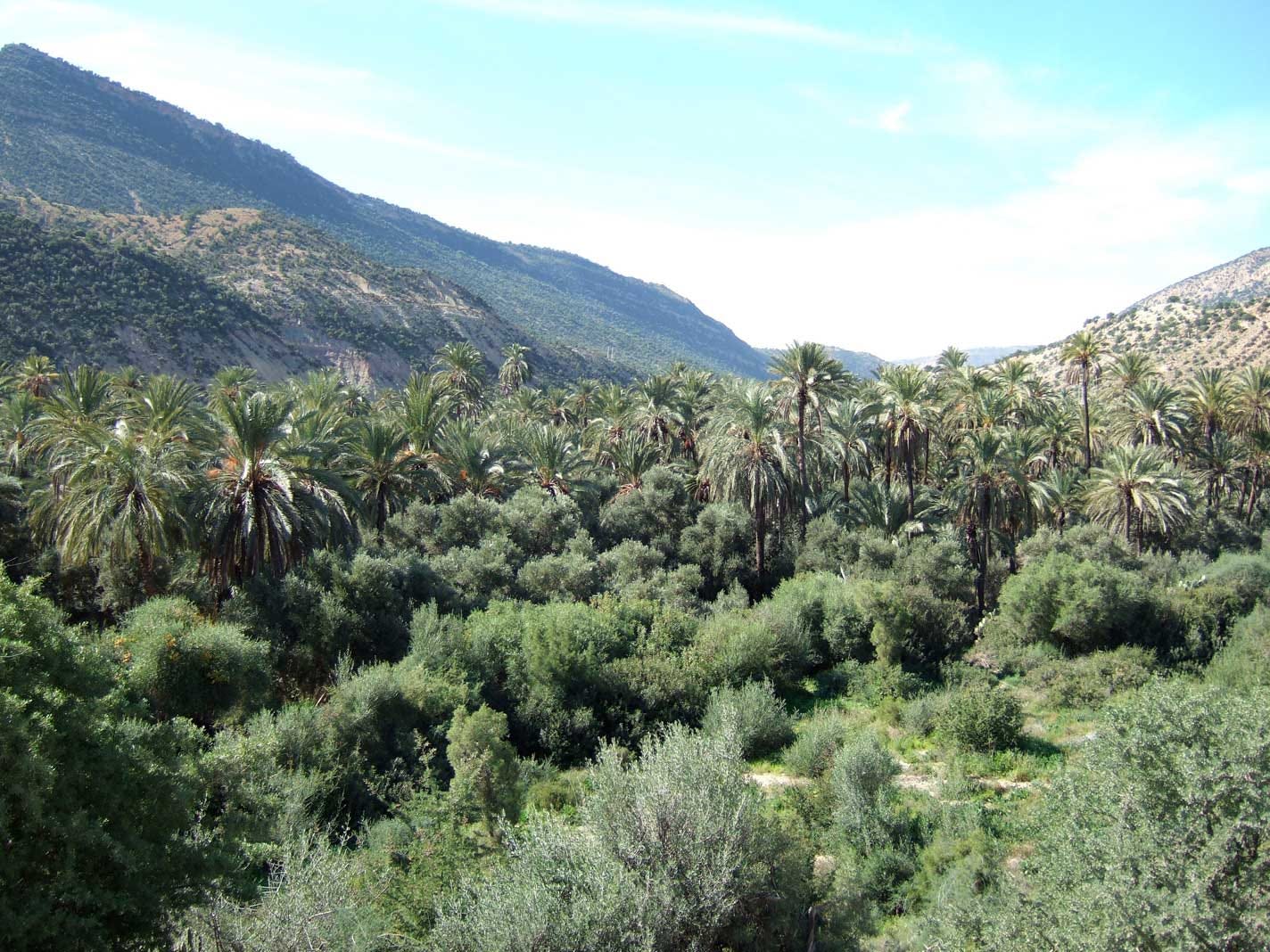
In the midst of a desert, a forest ecosystem that protects/builds soil, provides shelter, shade, food and holds moisture is thriving.
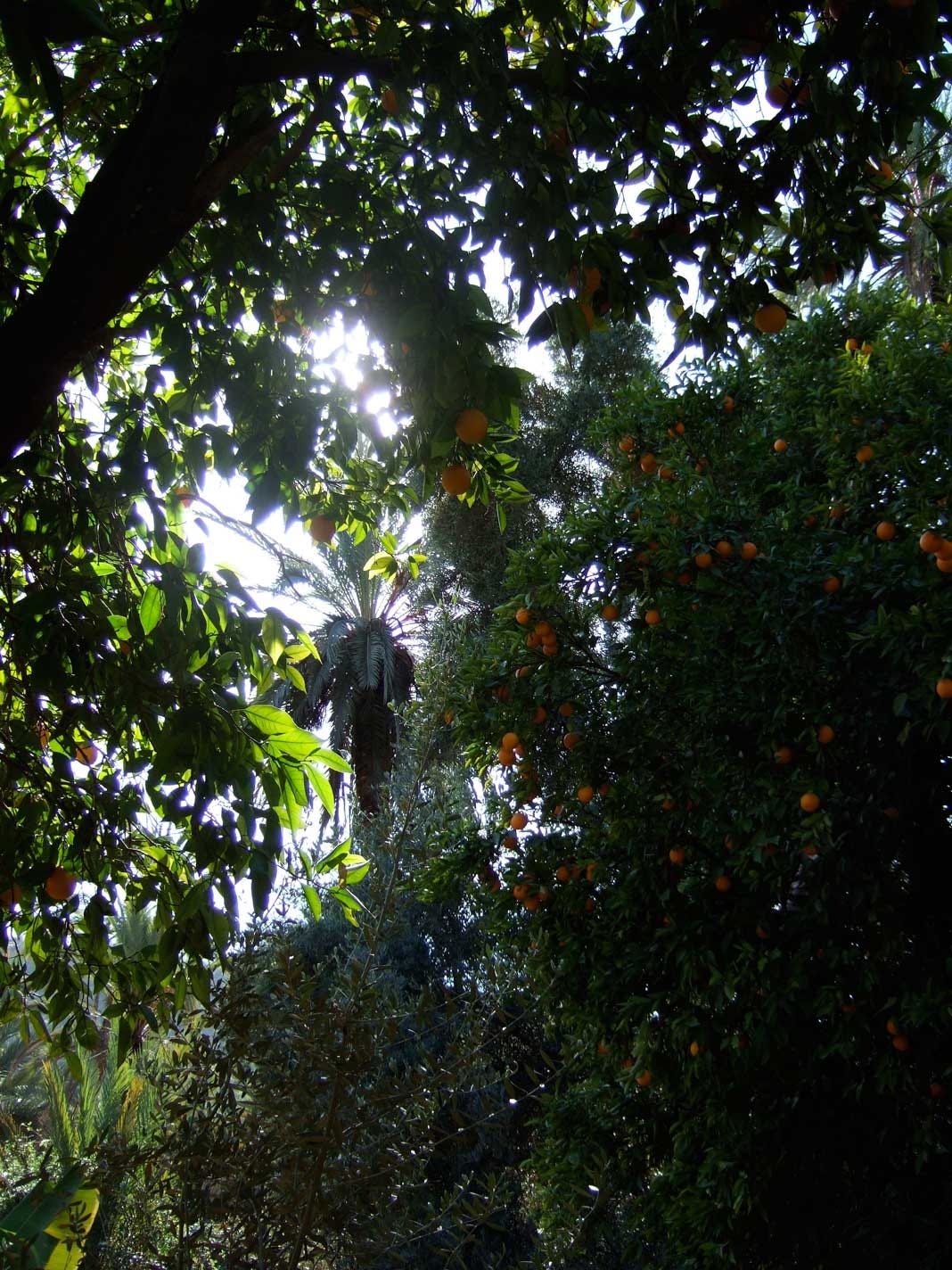
Date palms are the main overstorey species with an understorey of carob, bananas, quince, olives, figs, pomegranates, guava, citrus, mulberries, tamarinds, grapes... and many more smaller species.)
But before we explore the Forgotten Food Forests of Morocco, let us first sample the cuisine that was born of the cultivation, trading and creativity of many generations of people from that region.
The aromas and flavors of the inviting recipes shared below offer you a passport to take your senses on an adventure to directly perceive the abundance and diversity offered by the illustrious sun-drenched landscape of North Africa throughout the centuries.
Moroccan Harissa Spice Medley
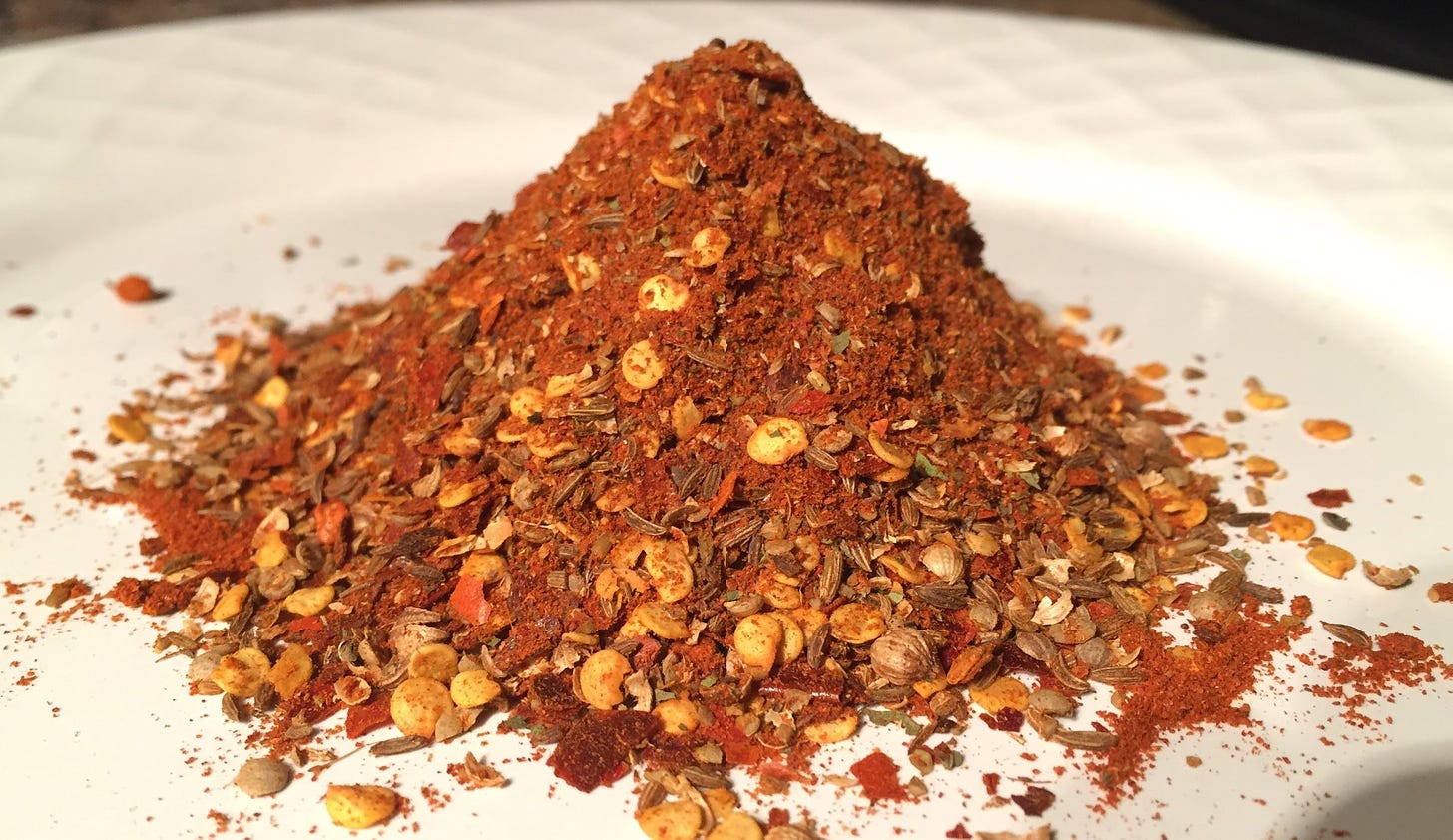
The aromas and tastes of this dry spice mix offer poetry for the senses and a glimpse into the rich cultures of Morocco and Tunisia.
I find that Moroccan food has an amazing balance of robust, floral, tangy, sweet, savory and spicy.. the land there offers so many very invigorating and nutritious foods and has inspired some truly superb culinary expressions.
Below is my interpretation of one of the foundation spice blends of the rich and illustrious North African culture of Morocco.

Ingredients:
- 1 tbsp cumin seed
- 1 tbsp caraway seed
- 1 tbsp coriander seed
- 2 tbsp chili flakes (of desired heat)
- 2 tbsp sweet paprika
- 2 tbsp dried onion flakes
- 1 tbsp dried mint
- 1 tbsp dried cilantro
- a pinch of powdered cinnamon
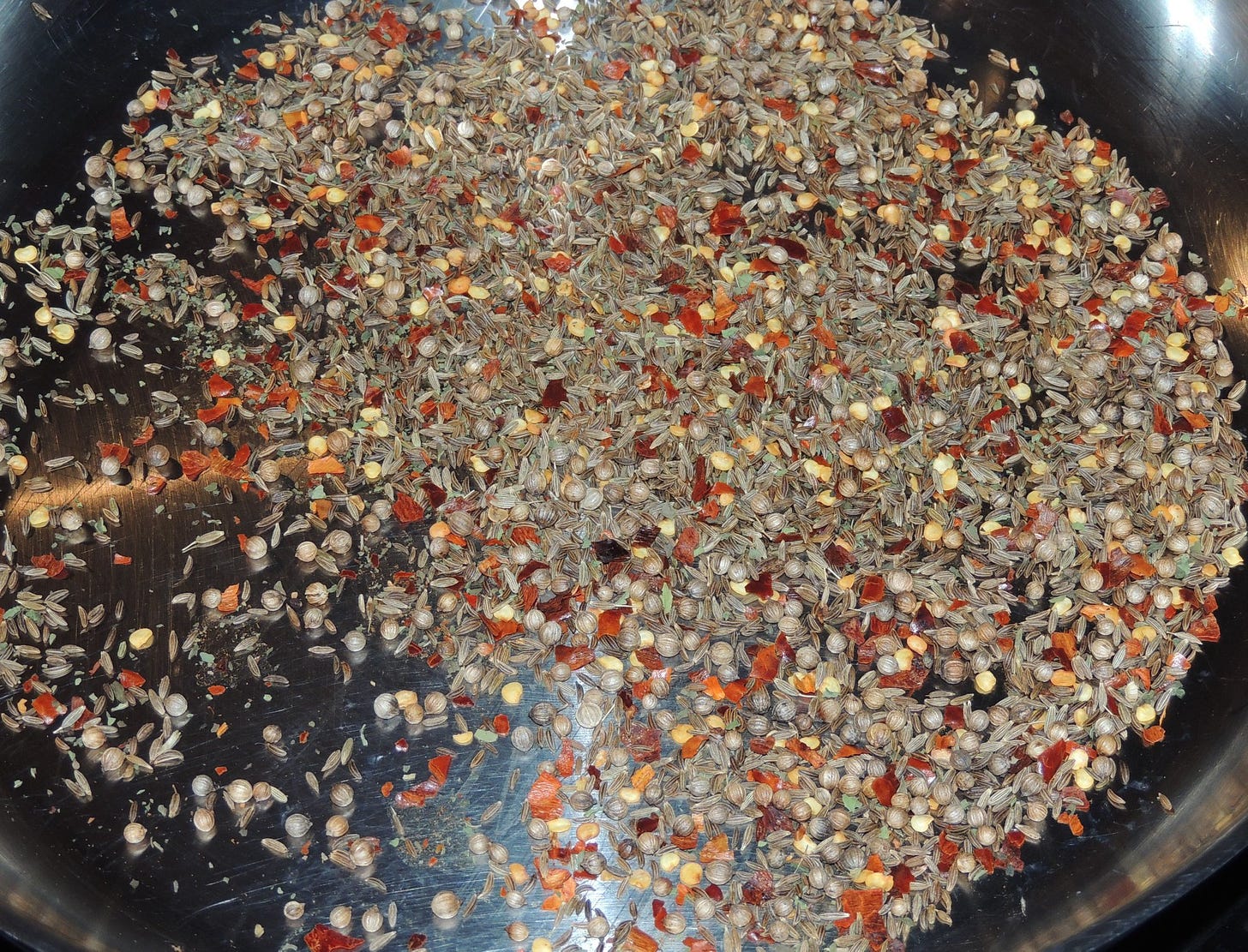
Directions:
Toast the cumin, coriander, and caraway seeds on a dry pan over low-medium heat. Toast only until they are fragrant. Remove the seeds from the heat and, using a mortar and pestle, grind them into a powder.
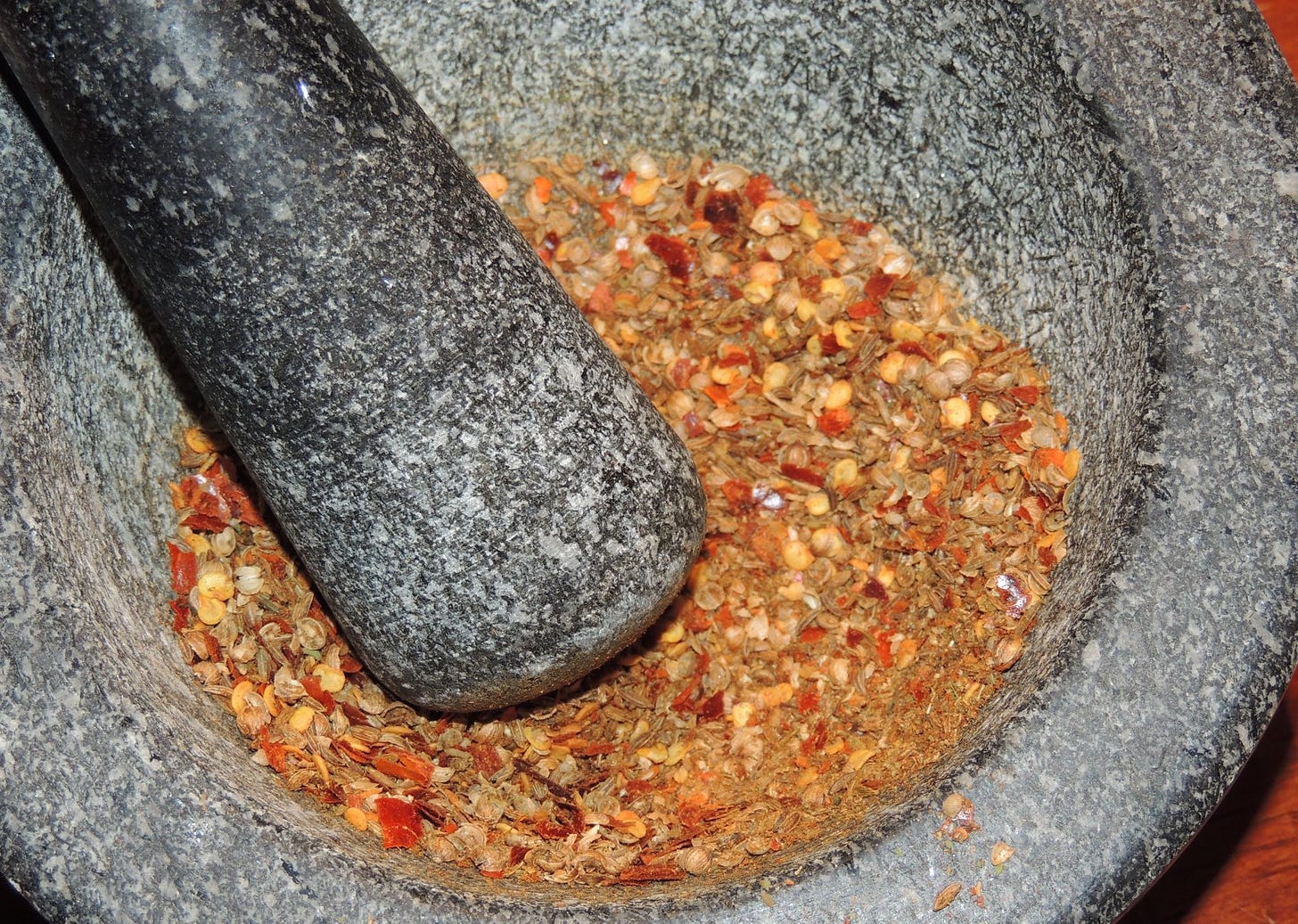
Transfer the powdered seeds into a bowl, then add the remaining ingredients. Mix thoroughly.
Serve immediately or store in an airtight container for up to 6 months.
This spice mix is delicious when added to amaranth, quinoa, rice, couscous (or other grain dishes) sprinkled on veggie burgers, added to salad dressings, tagines or used as a dry rub on your favorite bbq-ed foods. Add a splash of red wine (or mead), some fermented peppers and some tomato paste, blend and enjoy as an amazing marinade.
Moroccan Vegetable Tagine
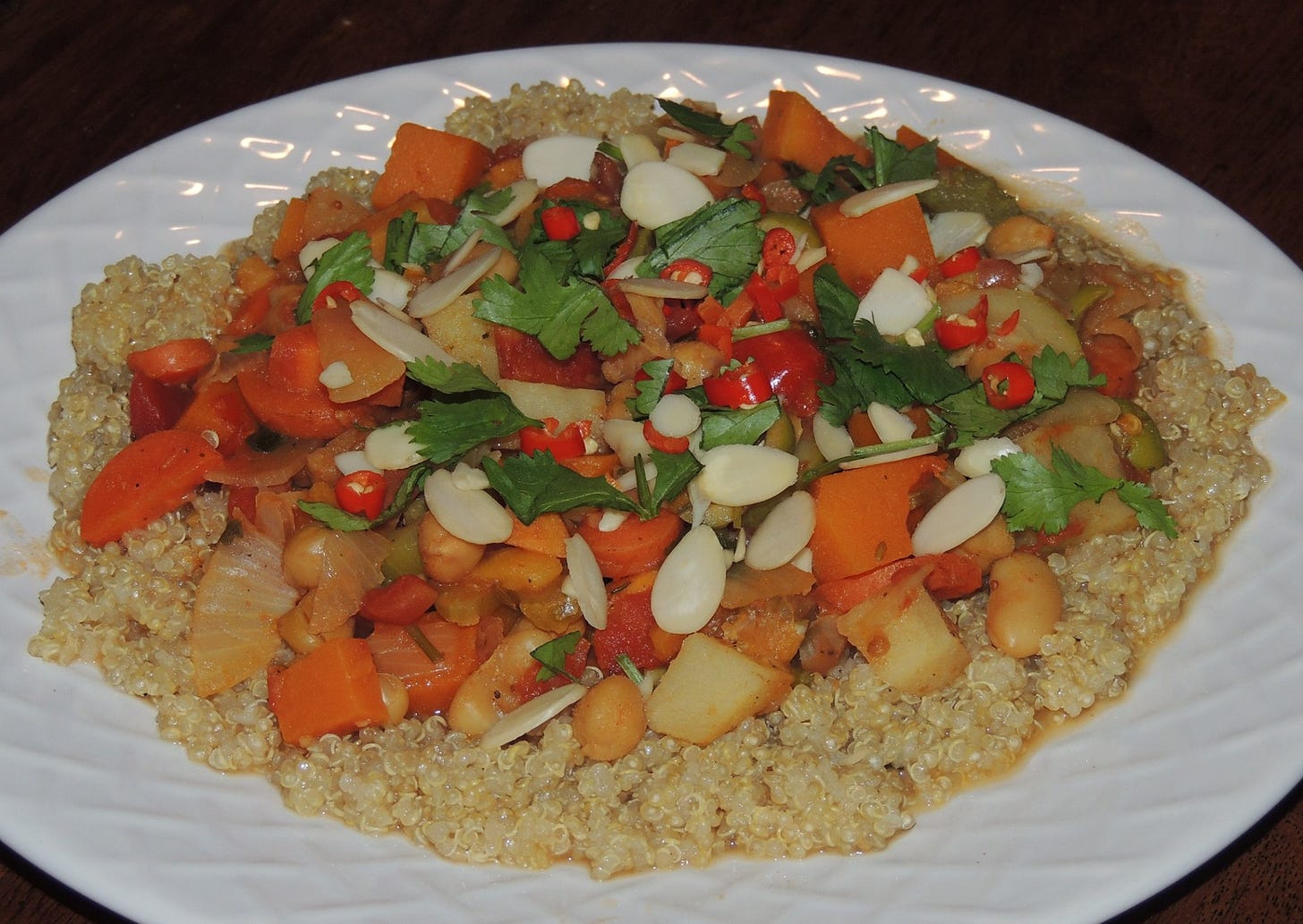
This is a hearty, flavorful and filling stew that beautifully showcases and blends the spices, citrus, legumes, and fruit of North Africa. It is bright and inviting and can be served on a bed of amaranth, quinoa, rice or couscous.
To make this unique and warming dish we use the Harissa Spice Medley (shown above) to build the mysterious and exuberant background flavor of the broth and then we add a diverse range of veggies, fresh herbs, beans, dried fruit, citrus and spices.
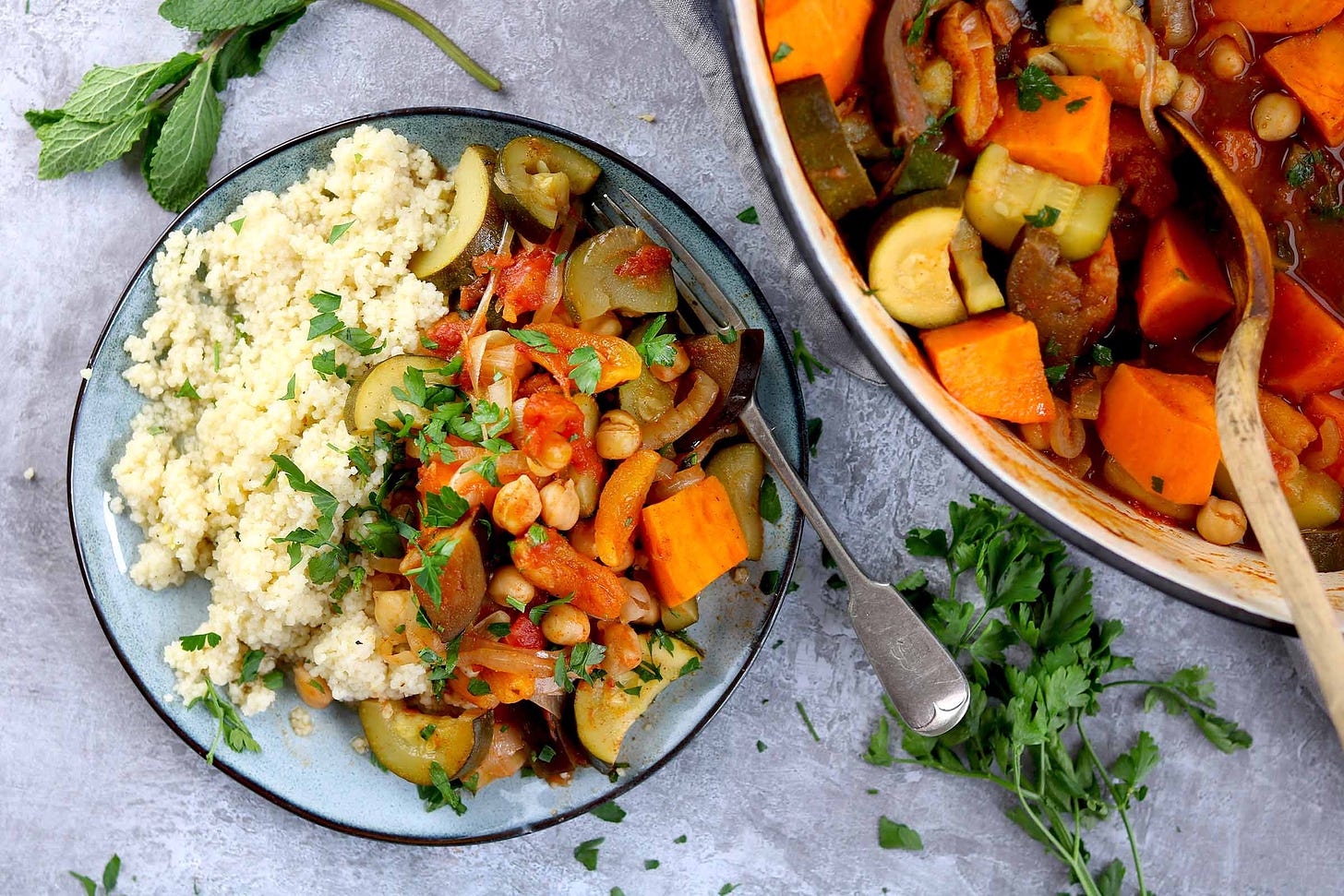
It is one of our favorite ways to use our winter squash, turmeric, ginger, autumn herbs and hot pepper harvests as we can make a large batch and stretch the bright flavors and warmth of the summer into the winter months. This meal is very nutritious offering a full spectrum of phytonutrients, minerals, vitamins, antioxidants and amino acids.
Tajine is a dish that is named after the earthenware pot in which it is traditionally cooked. This type of cookware and meal has a rich and illustrious history in several nations in North Africa and the Middle East.
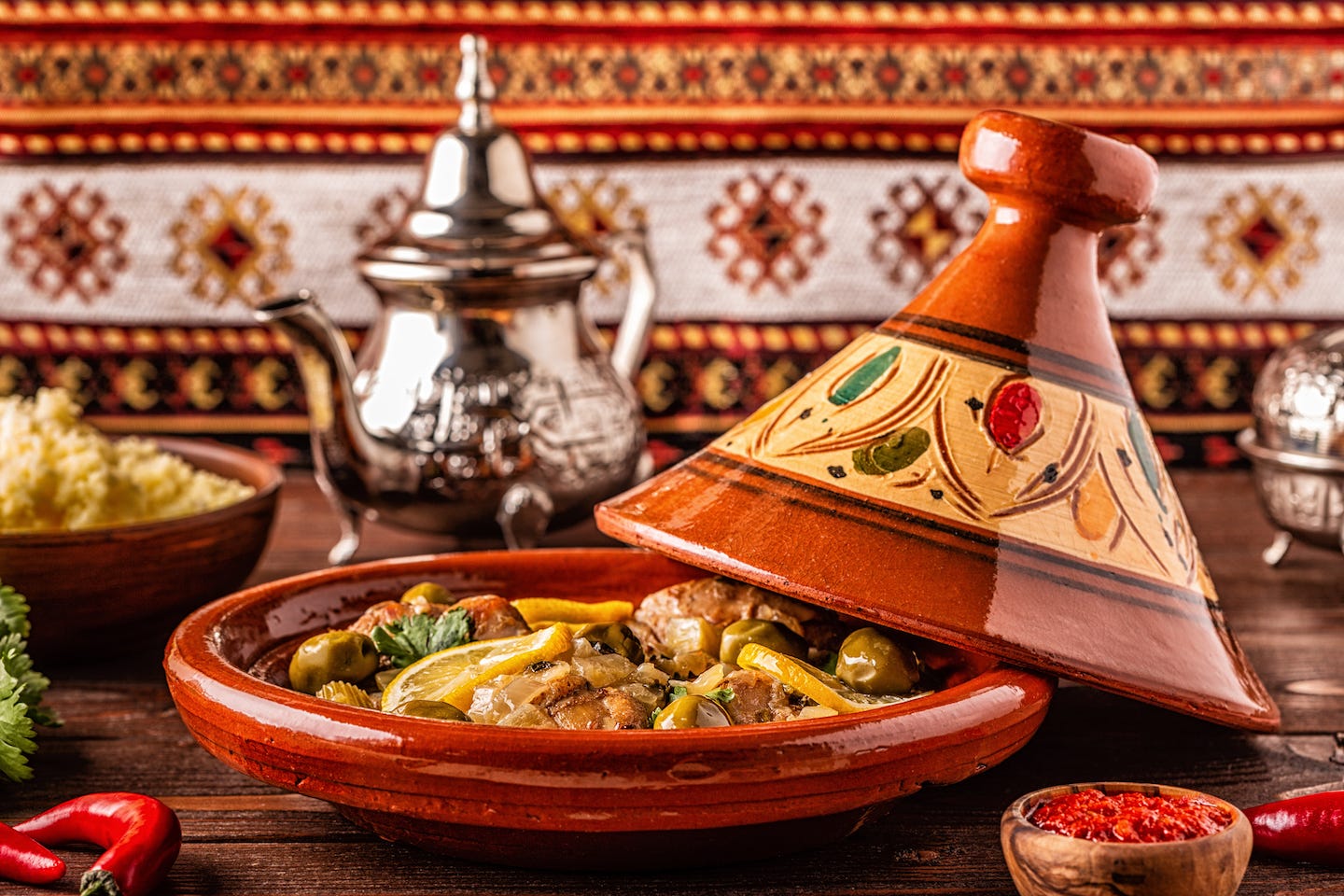
Our Moroccan vegetable tajine recipe offers a glimpse into both historical connections between multiple cultures (that exchanged spices, food crops, and cooking styles) and into perceiving/connecting with the beautiful land that provides the flavorful crops included in this recipe. It is our hope that this recipe can offer "a passport for your senses" inviting you to come on an adventure with us to enjoy the same delicious food that has been enjoyed by the people of Morocco. This land of ancient olive trees, citrus groves and markets overflowing with bright spices where an ancient food forest stands that can teach us much about improving our food production systems to be more regenerative and diverse.
Ingredients:
- 1-2 cans chickpeas
- 1 can Romano beans
- 1 can diced tomatoes
- 1 small can tomato paste
- 1 litre vegetable broth
- 1/2 cup diced sundried tomatoes
- 1 small butternut squash
- 2 medium sized sweet potatoes
- 2 white fleshed sweet potatoes
- 1/4 cup diced cilantro
- 1/2 cup diced parsley
- 1 russet potato
- 2 large or 3 medium onions
- 5-7 large carrots
- 1 or 2 celery stalks
- 1/2 cup diced dried figs
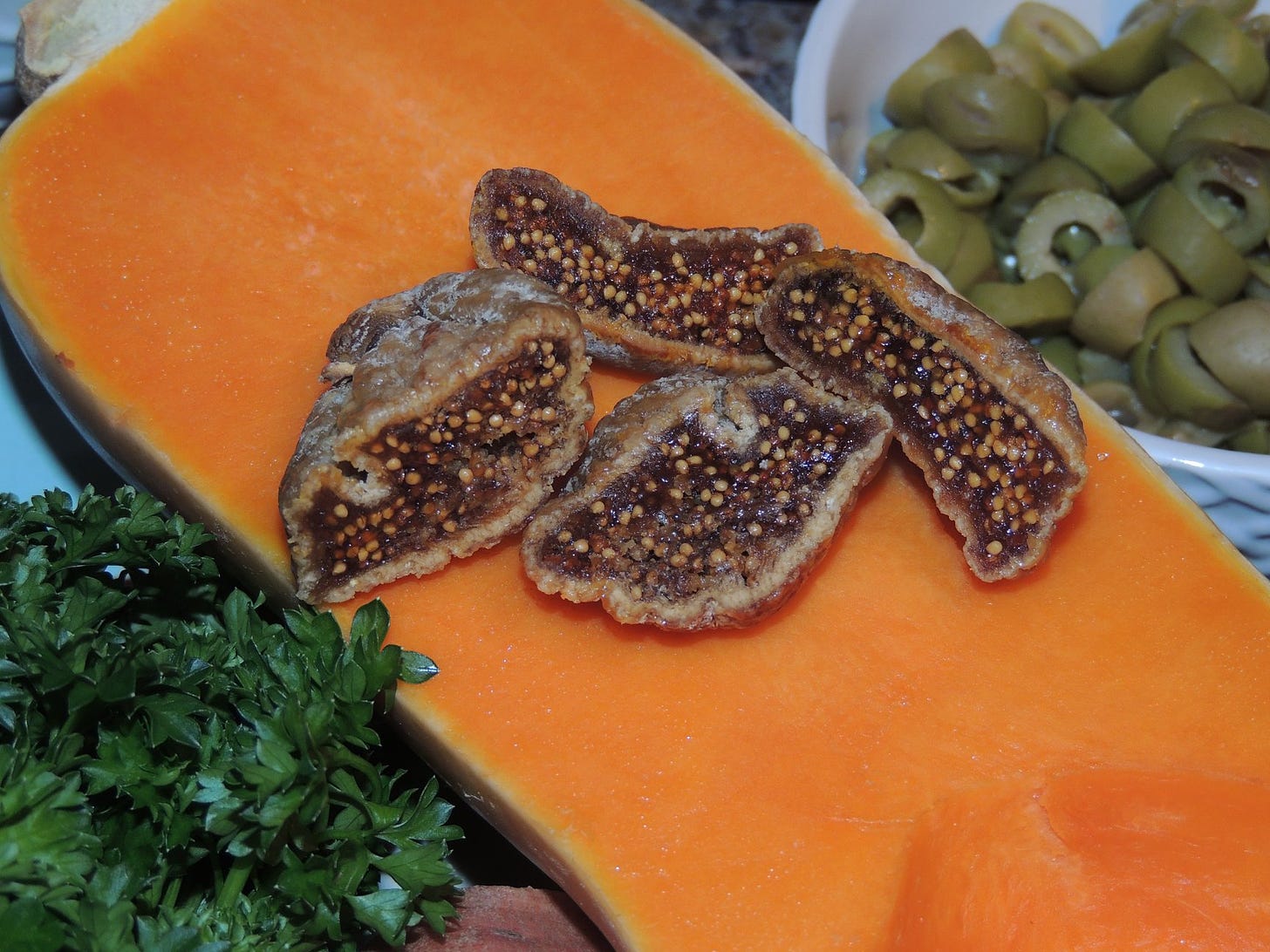
- 3/4 cup diced dried apricots
- 1/4 cup diced raisins
- 2 large red bell peppers
- 2 zucchinis
- 1 inch thick cube of fresh turmeric root finely diced (or 1/2 teaspoon powdered)
- 1 tablespoon finely diced fresh ginger root
- 2-3 tablespoons olive oil
- 1 lemon, first all zest extracted, then sliced
- 2 teaspoons whole coriander seed
- 2 teaspoons whole cumin seeds
- 1 1/2 teaspoon caraway seed
- 1/2 teaspoon powdered turmeric
- 1 teaspoon dried mint
- 1 -2 teaspoons sumac powder
- 1-2 tablespoons red chili flakes or powder
- some hot sauce or a hot red pepper
- a handful of crushed or sliced almonds for garnishing
- water for adjusting consistency
- 1/4 teaspoon 1/2 teaspoon cinnamon
Preparation: Take the coriander seed, cumin seed, and caraway seed and mix together in a medium pan, set heat to medium-high and constantly move them around in the pan (using a spatula or something to help all sides if the seeds get some toasting) toast until fragrant and seeds turn a light golden color (being careful not to burn). Transfer to mortar and pestle, grind until spice mix is in little pieces. Transfer to a separate container, add sumac, a pinch of cinnamon, the mint, a pinch of powdered turmeric, the red chili flakes/powder and then mix well.
Lemon slices are lightly salted then boiled in a shallow amount of water in pot with a splash of hot sauce and a pinch of coriander seeds for 2-3 min, drained and then diced. Onions, celery, red pepper, turmeric, ginger, zucchini and carrots fried for few minutes, then half of the ground harissa spice mix (reserving half for later to adjust flavor)
And add diced dried fruit, a splash of hot sauce. Fry for 3-5 min then throw in all the rest of root veggies, diced lemons, sun-dried tomatoes, diced tomatoes, tomato paste, chickpeas, beans, spices, green herbs and vegetable broth. Mix well and then bring to a boil before lowering heat and simmering with lid closed for 10-15 min (or until butternut squash is tender).
Checking flavor every 5 min or so throughout simmering to see if spices need adjustments (adding some more Harissa, or a pinch of this or that, hot sauce, a squeeze of lemon to personal taste etc). Serve finished tagine over a bed of quinoa, amaranth, couscous and/or rice and garnish with some diced cilantro, parsley and crushed or sliced almonds. Enjoy!
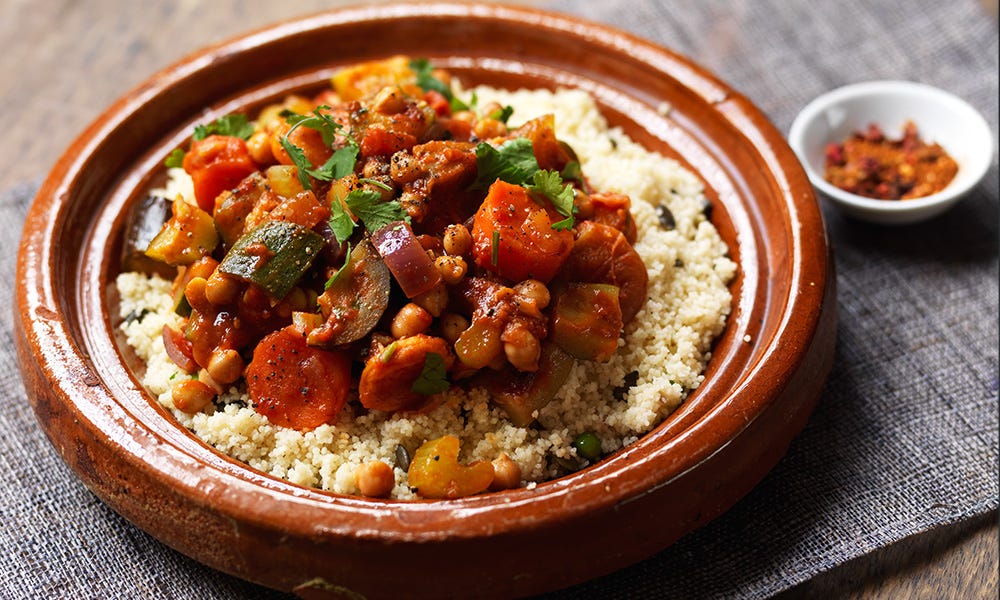
The Forgotten Moroccan Food Forest:
There are places in the world where ancient peoples had the understanding, skills of observation/pattern recognition, intelligence, foresight and patience to align their efforts to produce food with the well being of entire ecosystems. They used a number of soil building practices and propagated plant and tree species that could simultaneously feed people and be part of the functioning fabric of a self sustaining ecosystem (protecting their water table/soil, providing shelter for humans, habitat for animals, moderating weather extremes as well as providing materials to build dwellings and create art).
Morocco provides one such example (where an ancient group of people worked together in symbiosis with nature to co-create a functioning eco-system that provides ideal nourishment for humans at the same time.) It appears that many generations ago people were practicing something similar to what we now call "permaculture" and "food forest design" (working with nature to encourage a succession of food bearing plants that fill every niche in an eco system, becoming self-sustaining and self-perpetuating and providing habitat for many creatures as well as food and shelter for humans).
The ancient food forest in Morocco exists in the midst of a desert. Yet (as stated above) it is a forest eco-system that protects / builds soil, holds moisture and produces abundant food crops.
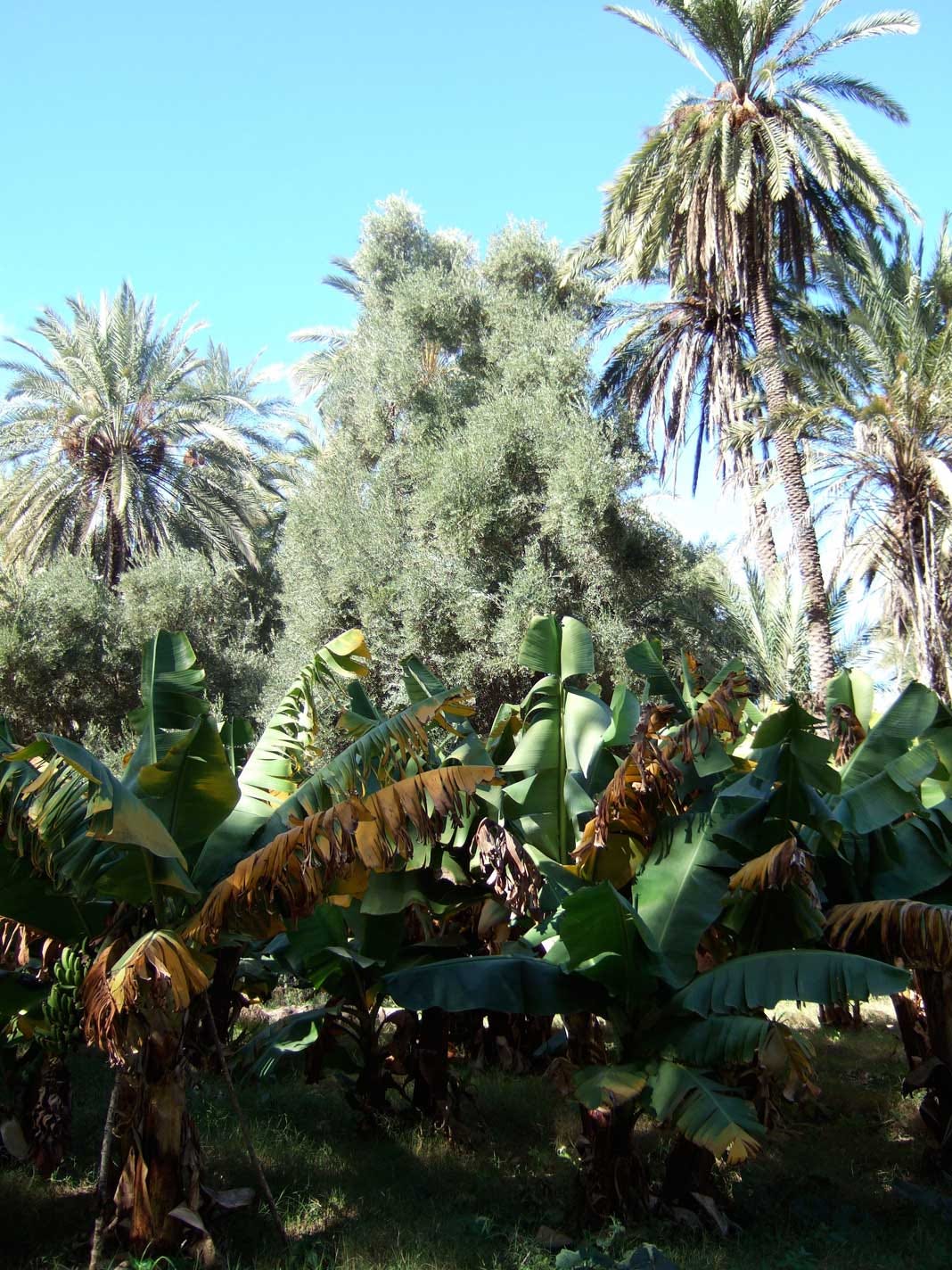
For more info on the forgotten Moroccan Food Forest: https://www.atlasobscura.com/articles/what-is-permaculture-food-forests?fbclid=IwAR33DRCGqeBYCJzuqOGsjoI6UuNauPsy1EY0KeOVnlUAxBC2gW7WgCCnag8
and https://adventure.com/ancient-food-forests/
Forest gardening has also played a part in shaping the forests/jungles of North and South America.
To provide further insight into the ancient practice of Indigenous forest gardening I will share a comment of a very knowledgeable friend of mine Zach Elfers:
"One great example is the milpa cycle of Mesoamerica, which much like in the northeast, featured maize in the centerpiece. In the milpa cycle, (which exactly mimics the ecological succession process) the annuals of maize-beans-squash get planted in a cleared forest patch for 1-4 years consecutively, but at the same time people are planting native perennial foods and medicines, forbs, herbs, shrubs, fast-growing trees (especially nitrogen fixers like alder), fruit and nut tress, and canopy hardwoods. As the maize-beans-squash complex goes "offline" in production, all the other perennial food forest plants would begin sequentially coming "online." And thus seen from a macro- ecosystem level, such subsistence wouldn't look like widespread forest clearance at all. It would look like a shifting mosaic of woodland ecosystems.
Tracking such indigenous subsistence cycles can be seen better through floristic studies. Like the studies Robert Nigh in Mesoamerica, or William Balée in the Amazon, certain trees of the "high forest" can be seen as indicators of prior human distance. E.g., some trees are planted/managed on Old "swiddens" or "fallows," which over time have succeeded into canopy forest. In the northeast, I would point to Shagbark hickory as one such indicator tree, which Brown noted had a distribution going up into Canada exactly matching the Iroquois territory at the time just prior to European colonization. Other trees to look at include American chestnut, butternut, shellbark hickory, bur oak, and probably black walnut.
A way to understand this through ecological metrics is looking at variations in alpha, beta, and gama diversity. Indigenous forest gardening subsistence tends to lower alpha diversity, raise beta diversity, but leave gamma diversity (overall diversity) more or less unchanged."
I explored some other dimensions and potentials of the Milpa cultivation technique in this article (below the recipe) :
In order to embark in a new direction for our society (based in integrity, abundance and equality), break the old degenerative patterns and create decentralized regenerative food systems we need to engage the kids that will become the next generation of farmers. We need to provide these kids with material that inspires their imaginations, offers hope and shows them what is possible (when we align our food production systems with the patterns and cycles of a mature eco-system).
We live in a time where most children in Canada and the US are capable of identifying over 100 corporate logos, yet most can identify less then ten plants. In this time of a hyper-distracted and over stimulated chemical/digital culture, offering avenues for children to slow down and reconnect to things that really matter in life (like gardening or planting a food forest) is a very meaningful gift we can share with the children and future generations.
We can look to these wise long term food production/forest management strategies of the ancients to build resilience and food security in the present by designing food forests where we live and teaming up with nature to invite diverse ecology into the places we grow our food.
Getting children to be excited and interested in this is imperative if we wish to break the cycle of degenerative agricultural practices and chart a path to a more sustainable and regenerative future.
Books like Matt Power's "The Forgotten Food Forest" (shown in the pic below) provide an important piece of the puzzle in that endeavor.
"Highlighted in a popular Youtube video by Geoff Lawton and dubbed a 2,000 year old food forest, this book (shown above) highlights the safety net that food forests have always provided for humans throughout time and throughout cultures, and it invites the readers to plant their own food forests.
Illustrated by the masterful Asayo Janice Kubo who has worked with Disney, Warner Bros, and Netflix & years in process, The Forgotten Food Forest is stunningly detailed and true to the actual bioregion and real-life food forest."
You can order your own copy of The Forgotten Food Forest here:
https://www.thepermaculturestudent.com/shop/the-forgotten-food-forest
We can look to these wise long term food production/forest management strategies of the ancients to build resilience and food security in the present by designing food forests where we live and teaming up with nature to invite diverse ecology into the places we grow our food.
In my book I explore foods (such as those recipes in the article above) as well as recipe posts such as this one and this one that were enjoyed by various ancient peoples who were expert forest gardeners so we can have a way to 'connect' with and come to know the fruits of their labor through the senses. We can then honor them in the present by creating food forests of our own (as well as building on/revitalizing existing food forests). The path to create resilience, abundance and heal our relationship with nature begins with a handful of seeds and some tlc.
If you liked the content above you may want to check out my book (Recipes For Reciprocity: The Regenerative Way From Seed To Table) which was just released in eBook format. I hope to have physical books available for sale in the next few months as well.
When you cultivate food in the garden in a way that gives back to the living Earth and honors the many gifts we have been given in this life (including learning from cultural wisdom from those that came before us) you are engaging in the sacred act of Reciprocity.
Using your hands to give back to the Earth and to give thanks to Creator for the gift you have been given in this human body, by taking good care of it with nourishing, delicious and vibrant meals (that use food as medicine and provide poetry for the soul) is a way to give back to your body, your temple and thus a way to give back and say thank you to Creator.
One of the most powerful choices we can make to heal the relationship to Mother Earth, give back to and honor our sacred temple and in doing so engage in an act of Reciprocity begins with a handful of seeds and some TLC.
I am wishing you all a spring (and summer) time filled with hope, peace, feeling nourished and inspired by the abundance you cultivate and create in the garden and in the kitchen.





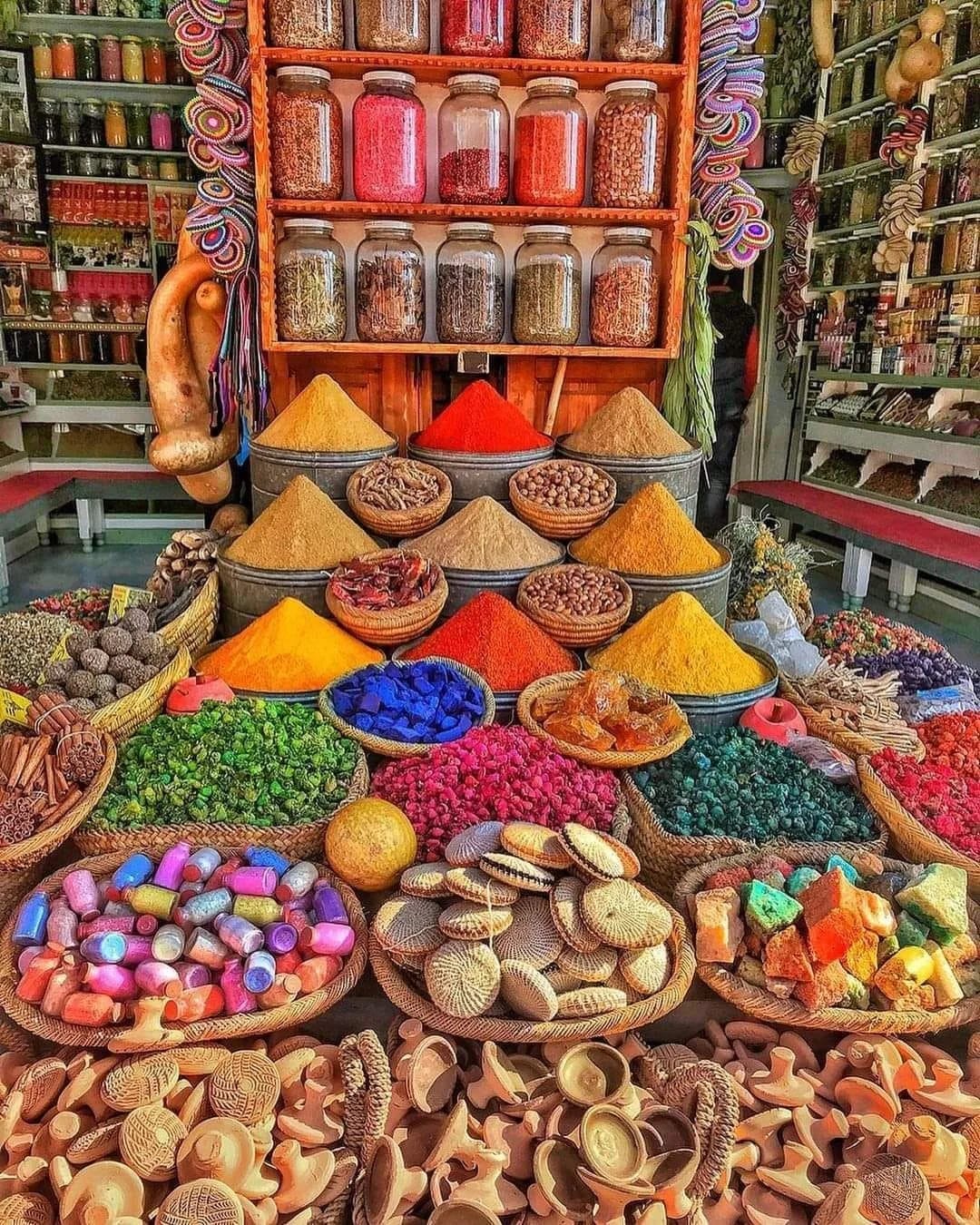
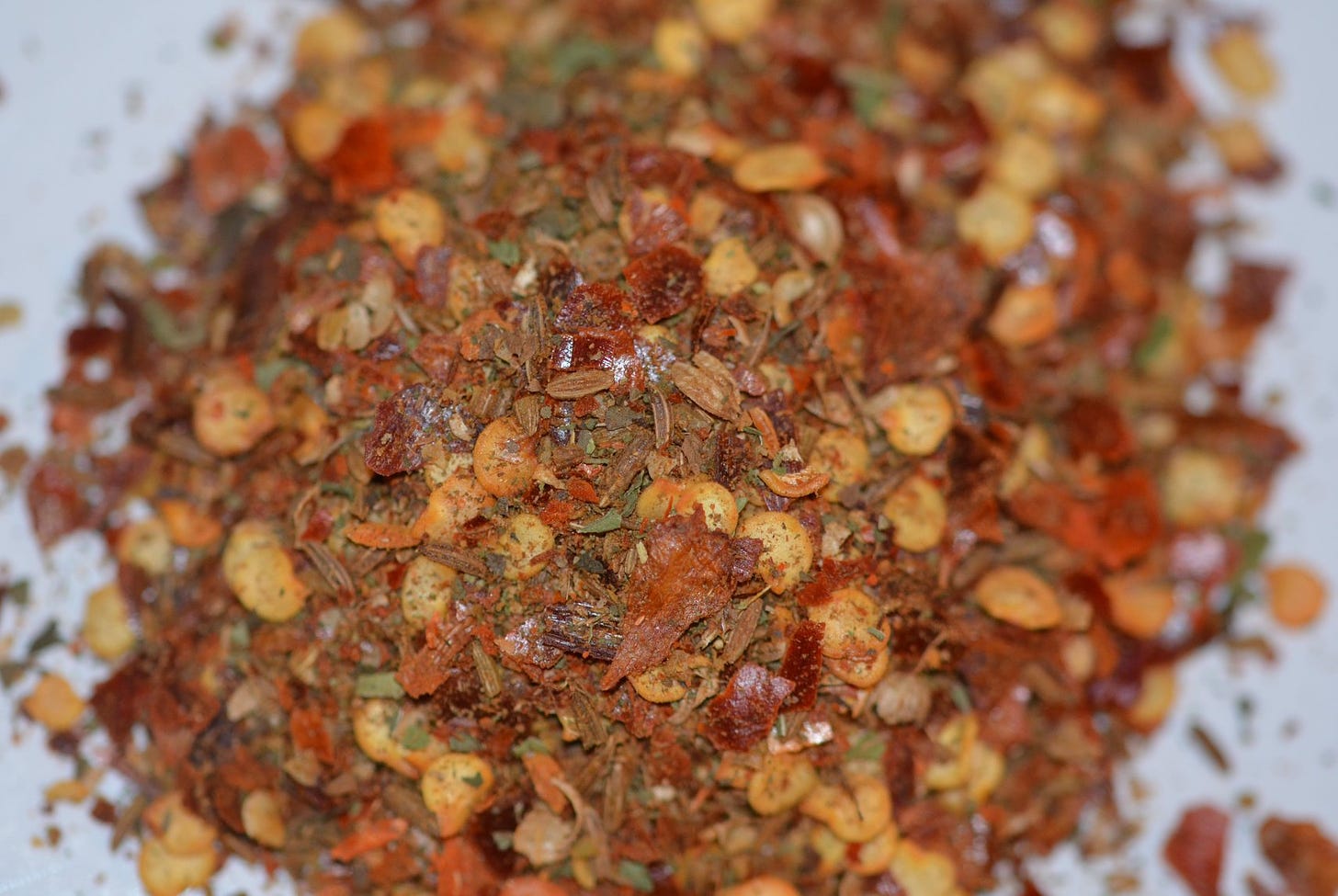
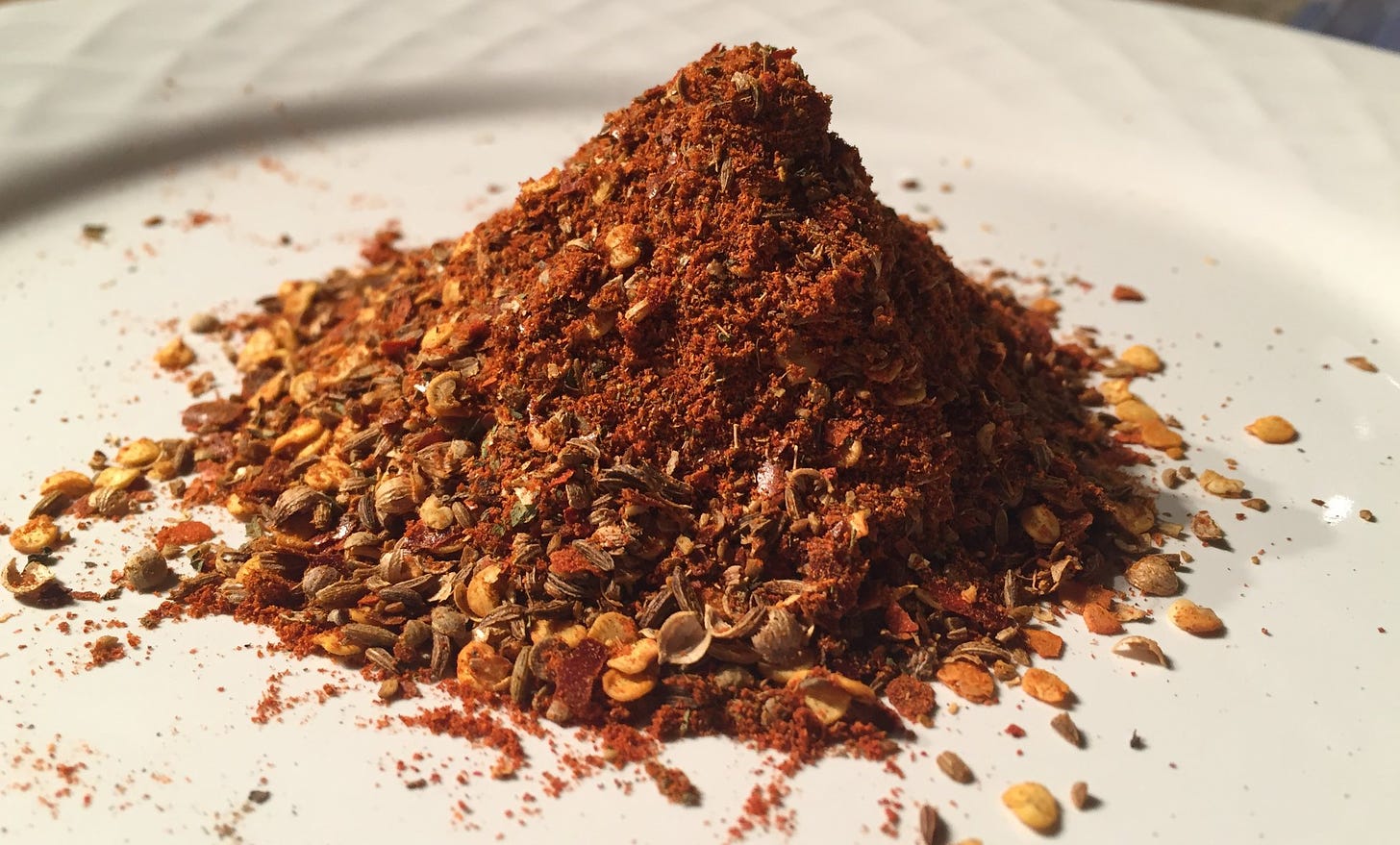
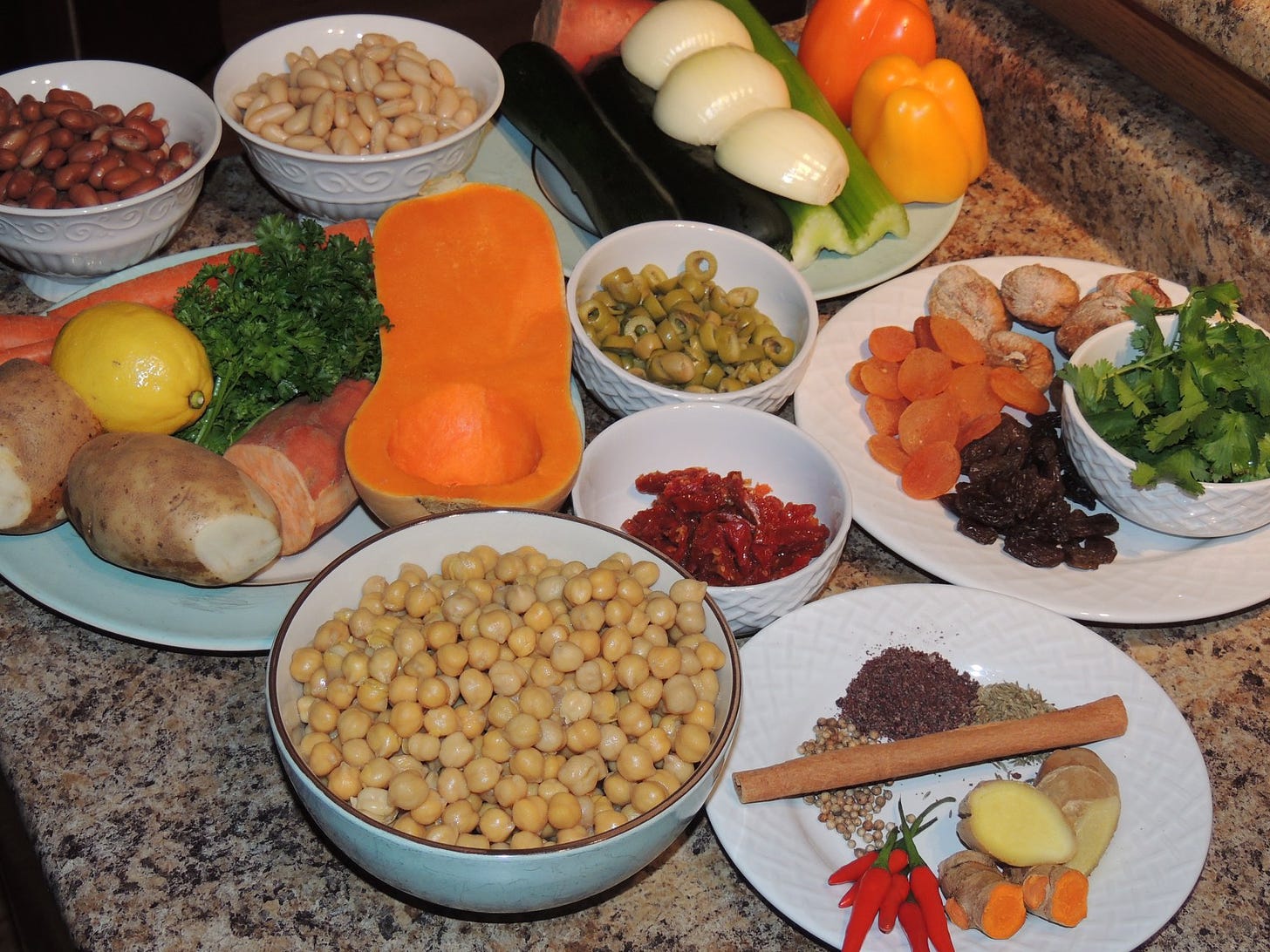
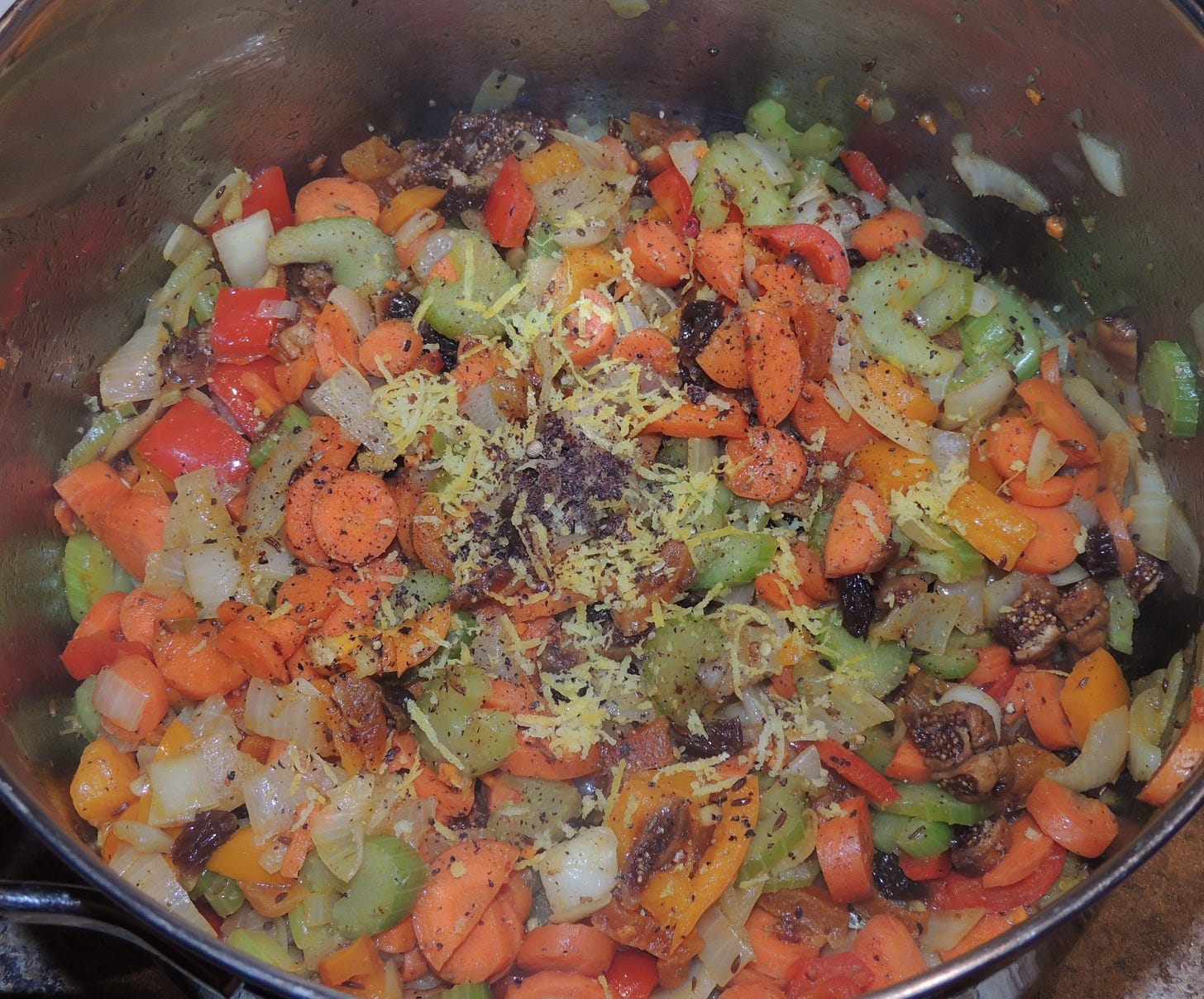
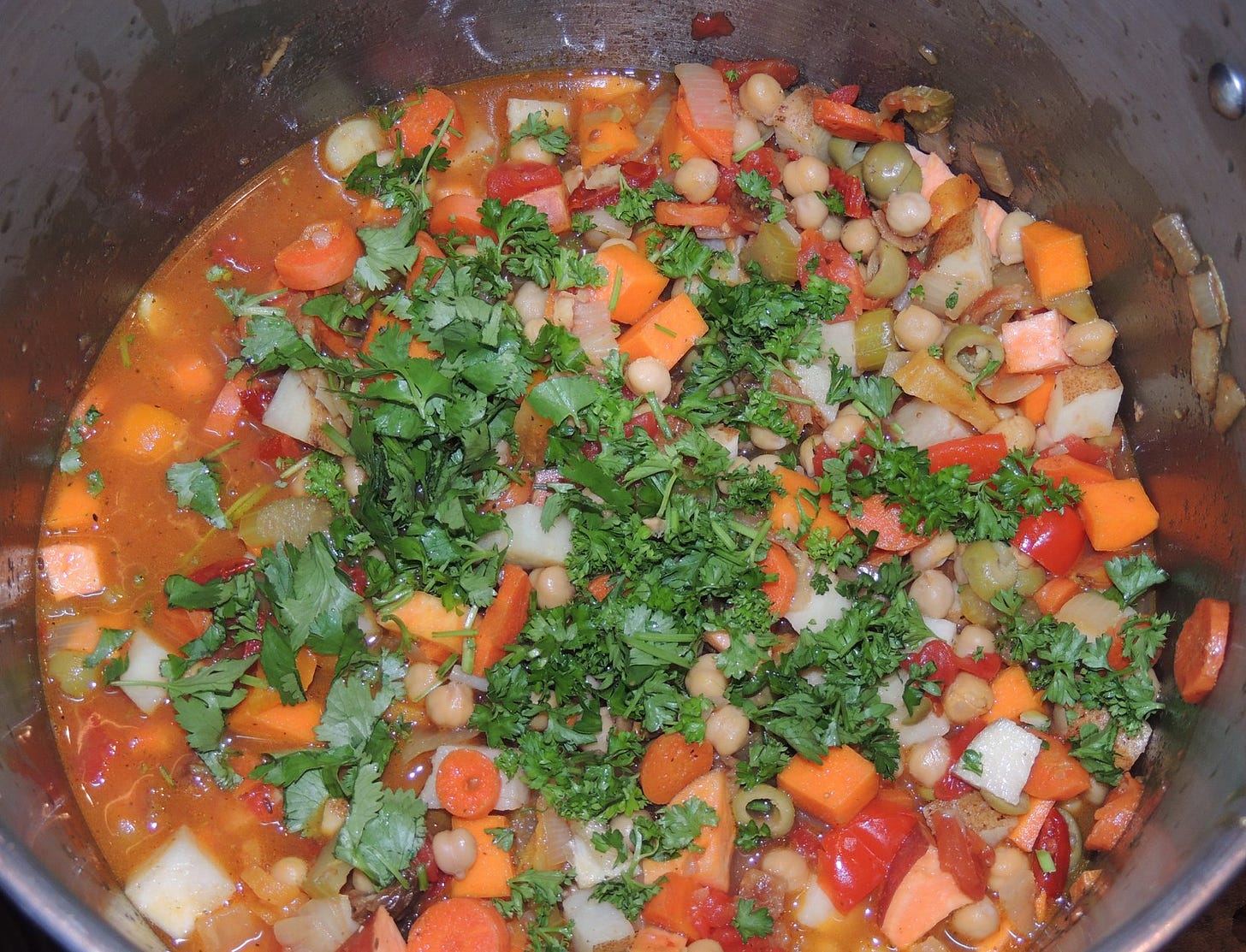
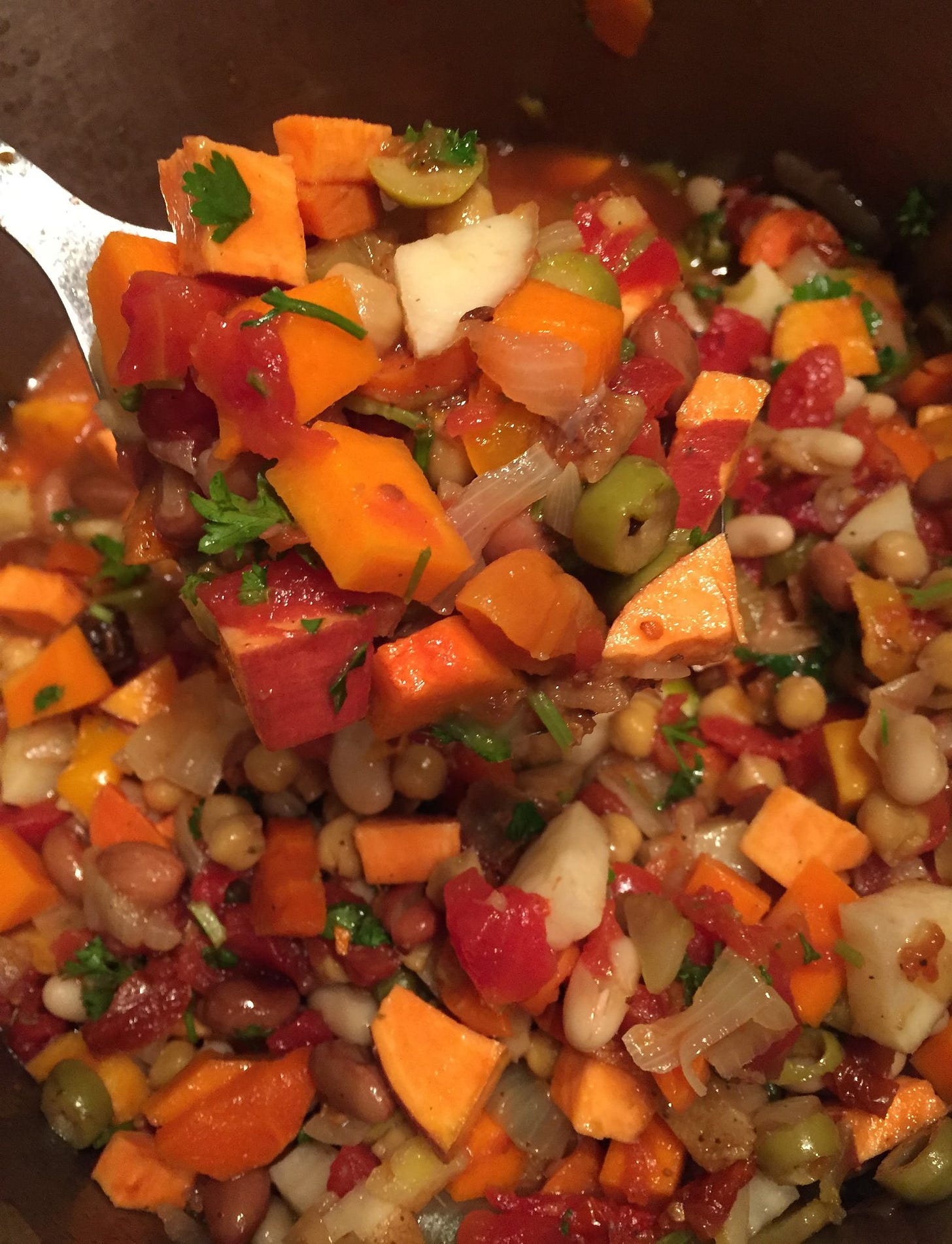

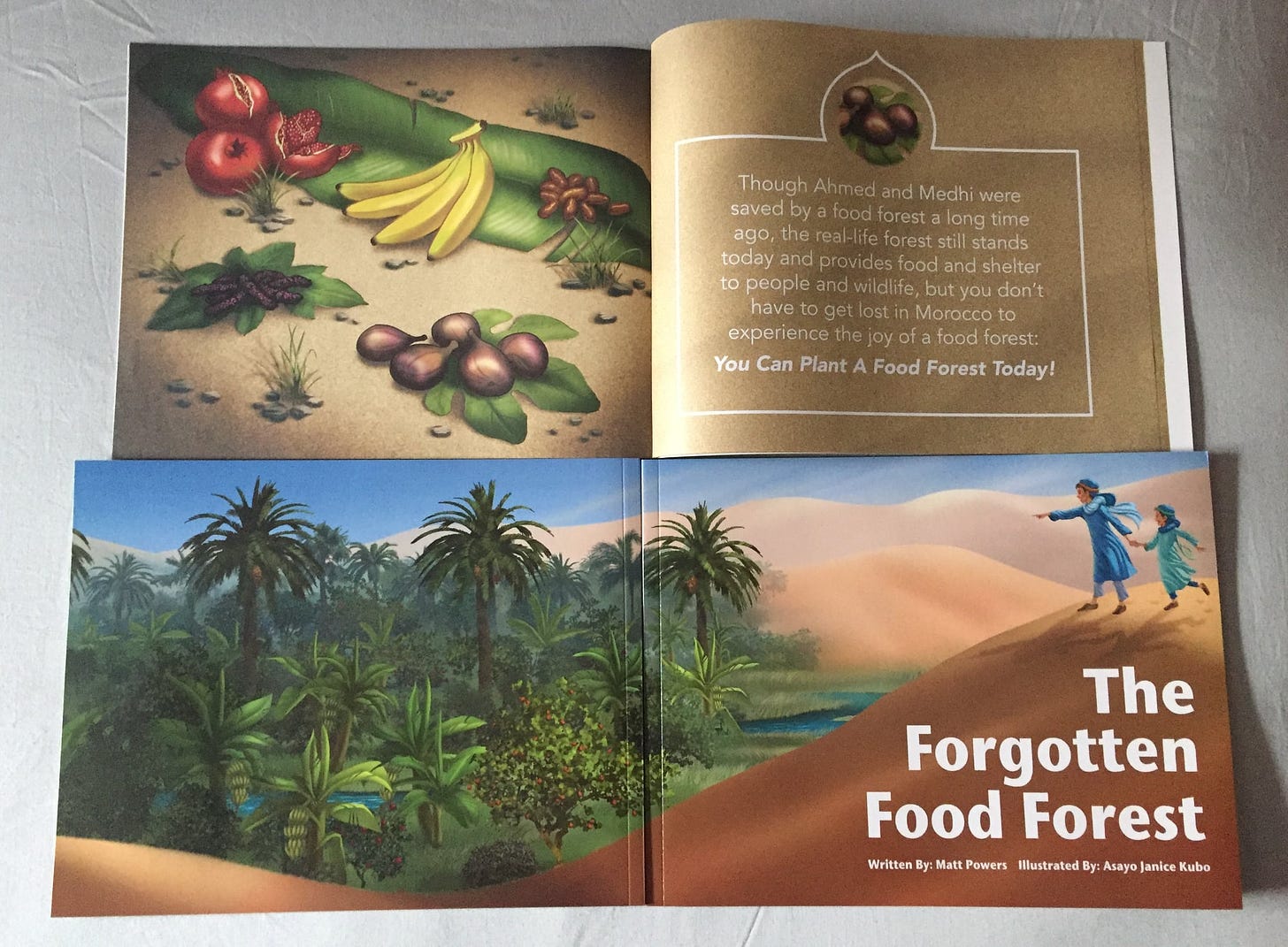
Gavin... Just to let you know... While reading this post my mouth was watering such that I had to swallow several times... fact! LOL!
I can't wait to try your Harissa. In the last year I 'discovered' Harissa and immediately became addicted to it. I use it in virtually every main veg course I make every day. I am positive your blend will be even better than the store bought version that I currently use. Once again, appreciate all your information..BTW am also excitedly waiting for Ethiopian information too. My son in law is from Addis and what I have sampled from his kitchen is quite wonderful. Thank you Gavin!